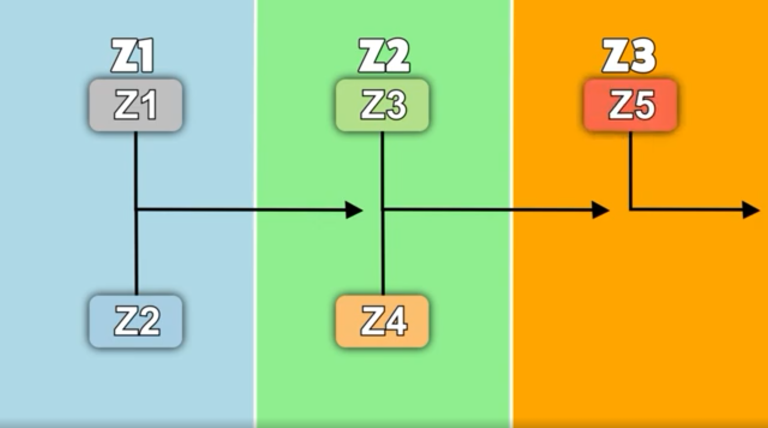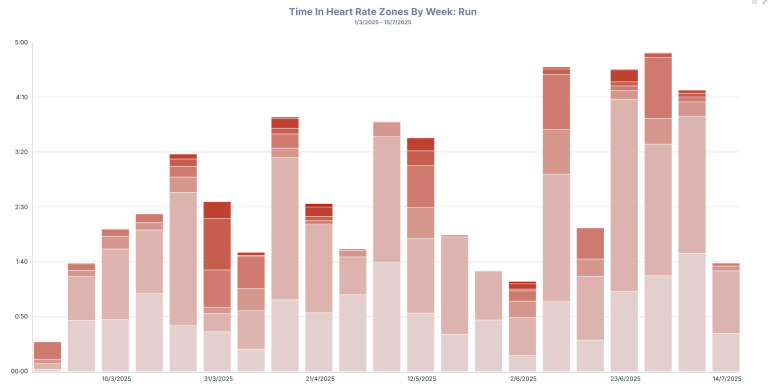Hernan’s Path to the Oceanman World Championship

An effective training plan should be a conversation. This is the story of Hernan, a swimmer from Puerto Rico, and how we adapted our 10k swim training plan to prepare him for the Oceanman Vieques, a 10.9km open water race.
Hernan purchased our 10K Open Water Swim Training Plan, but his unique situation quickly required some adaptations. Since he trained almost exclusively in the open ocean, he faced challenges with our training plan. He noticed a problem in his training data, letting me know; “Checking my Garmin, what I noticed is that I always end up in the Aerobic pace zone, even when it’s choppy or when I do 8/10 intensity sets.”
He was putting in the effort, but it wasn’t producing the target pace. He found that pace was an unreliable guide. “When it’s choppy or there are currents (which is most of the time), it’s quite difficult to maintain pace so for me it is not very good measure to track,” he explained. Realizing the plan needed some slight adaptation to his needs, he asked, “Should I focus on the pace, or should I base my efforts on how I feel?” With open water swimming, there are so many variables that can affect pace, like Hernan mentioned, with the chop and currents. I had to get him to focus on his percieved affort rather than worry about pace. He would still get the desired training effect, even if the pace is slower than what he would like.
I explained that open water requires a lot more strength than pool swimming which encouraged the question from Hernan: “Can you recommend dry (outside water) exercises to complement the training?” This question started the process of making his plan more personalized.
Personalizing the Blueprint
Hernan’s feedback was the starting point for modifying his training plan. We worked together to adjust the program to his circumstances, focusing on two main changes.
Adding a Strength Foundation
Following Hernan’s request, we added a weekly strength session to his schedule. This was the first major personalization, meant to build the specific resilience needed for long-distance ocean swimming. The exercises were selected to build functional strength in the upper body and midsection muscles. The purpose was to give him more power and stability, which is especially helpful in rough water.
Shifting Focus from Pace to Perception
Hernan already knew pace was a poor metric for him. We focused him on the Rate of Perceived Exertion (RPE) scale that is within all of our training plans, which lets an athlete gauge intensity based on personal feeling. Instead of trying to hit specific speeds that were distorted by ocean conditions, Hernan learned to swim at a specific feeling of effort. This gave him a reliable way to control his intensity and make sure his hard workouts were actually hard.
Race Day: Conquering the Caribbean Swim
The adjusted preparation was tested on race day at Oceanman Vieques. The conditions were difficult. “It was rough conditions, 6-7ft swell in some areas and quite choppy,” he reported. In a situation that would have been a problem before, Hernan was prepared. His strength work supplied the stability to move through the waves, and his RPE training allowed him to manage his energy over the 10.9km distance.
He described the outcome simply: “I could hardly keep a decent technique, But I finished! And classified for the world championship…”
This was more than just finishing. It was a success earned through an intelligent, adaptive training process. The concrete results were clear in his review: “This training helped me cut 5sec/100m by focusing on technique, and more importantly being more efficient.”
Hernan’s experience shows the benefit of our collaborative and personalized approach to our training plans if you need them. The inital plan was a very good starting point for the swim, but the willingness to listen and adapt it to his feedback is what allowed him to succeed. He went from questioning his training abilities to qualifying for a world championship, showing that the best plan is one that evolves with the athlete.





